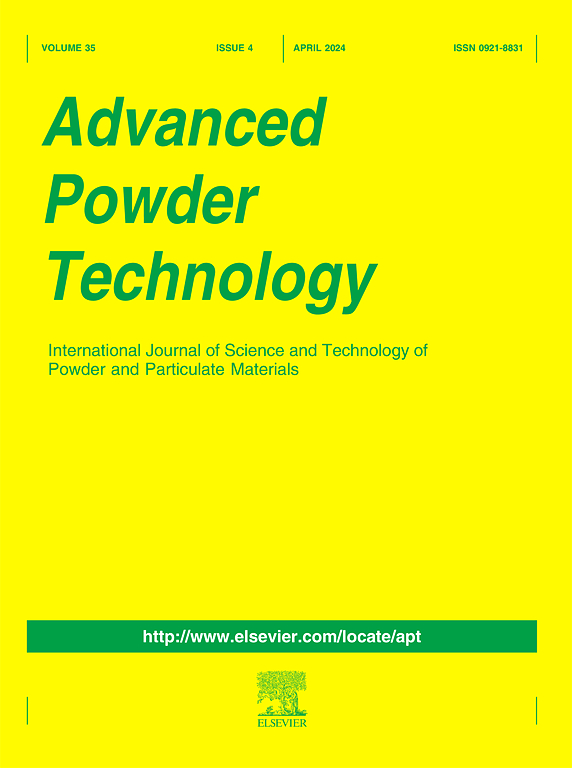浅埋紧密煤层煤柱破碎与自燃的数值与实验研究
IF 4.2
2区 工程技术
Q2 ENGINEERING, CHEMICAL
引用次数: 0
摘要
煤炭自燃是煤矿的主要灾害之一。浅埋紧密煤层开采时,采空区内煤柱破碎氧化情况难以确定,无法准确预测煤柱自燃情况,也无法确定采空区防火灭火指标。因此,本文通过数值模拟、实验研究等手段,分析了下工作面开采对上煤层煤柱塑性区分布及氧化特性的影响。研究发现,随着煤层间距紧密推进,上部煤层煤柱的变形特征大致可分为完整稳定、变形破坏和破碎失稳三个阶段。受损氧化煤柱在二次氧化过程中CO和C2H4临界温度点提前10 ~ 20℃,煤的氧浓度下限降低。煤柱破碎氧化后,表面结构变得粗糙,与氧气的接触面积增大。煤内含氧官能团的比例增加,煤的氧化活性提高。说明煤柱破碎过程对煤的氧化有一定的促进作用。研究结果揭示了浅埋紧密煤层开采对上部煤层破碎氧化自燃的影响,对浅埋紧密煤层的防火灭火工作具有一定的指导意义。本文章由计算机程序翻译,如有差异,请以英文原文为准。

Numerical and experimental Investigation of coal pillar crushing and spontaneous combustion in shallow and closely spaced coal seams
Coal spontaneous combustion is one of the major hazards in coal mines. During shallow and closely spaced coal seam mining, the coal pillar crushing and oxidation inside the goaf are difficult to determine, making it impossible to accurately predict coal pillar spontaneous combustion and determine goaf fire prevention and extinguishing indicators. Therefore, this paper analyzes the influence of lower working face mining on the plastic zone distribution and oxidation characteristics of the coal pillar in the upper coal seam based on numerical simulation, experimental research, and other means. The study found that as the closely spaced coal seam advances, the deformation characteristics of the upper coal seam coal pillar can be roughly divided into three stages: intact and stable, deformed and damaged, and crushed and unstable. The damaged and oxidized coal pillars have an earlier critical temperature point for CO and C2H4 by 10–20 °C during secondary oxidation, and the lower oxygen concentration limit of the coal decreases. After the coal pillar is crushed and oxidized, the surface structure becomes rougher, increasing the contact area with oxygen. The proportion of oxygen-containing functional groups inside the coal increases, and the oxidation activity of the coal increases. This shows that the coal pillar crushing process has a certain promoting effect on coal oxidation. The research results reveal the influence of shallow and closely spaced coal seam mining on the crushing and oxidation spontaneous combustion of the upper coal seam, which has certain guiding significance for fire prevention and extinguishing work in shallow and closely spaced coal seams.
求助全文
通过发布文献求助,成功后即可免费获取论文全文。
去求助
来源期刊

Advanced Powder Technology
工程技术-工程:化工
CiteScore
9.50
自引率
7.70%
发文量
424
审稿时长
55 days
期刊介绍:
The aim of Advanced Powder Technology is to meet the demand for an international journal that integrates all aspects of science and technology research on powder and particulate materials. The journal fulfills this purpose by publishing original research papers, rapid communications, reviews, and translated articles by prominent researchers worldwide.
The editorial work of Advanced Powder Technology, which was founded as the International Journal of the Society of Powder Technology, Japan, is now shared by distinguished board members, who operate in a unique framework designed to respond to the increasing global demand for articles on not only powder and particles, but also on various materials produced from them.
Advanced Powder Technology covers various areas, but a discussion of powder and particles is required in articles. Topics include: Production of powder and particulate materials in gases and liquids(nanoparticles, fine ceramics, pharmaceuticals, novel functional materials, etc.); Aerosol and colloidal processing; Powder and particle characterization; Dynamics and phenomena; Calculation and simulation (CFD, DEM, Monte Carlo method, population balance, etc.); Measurement and control of powder processes; Particle modification; Comminution; Powder handling and operations (storage, transport, granulation, separation, fluidization, etc.)
 求助内容:
求助内容: 应助结果提醒方式:
应助结果提醒方式:


